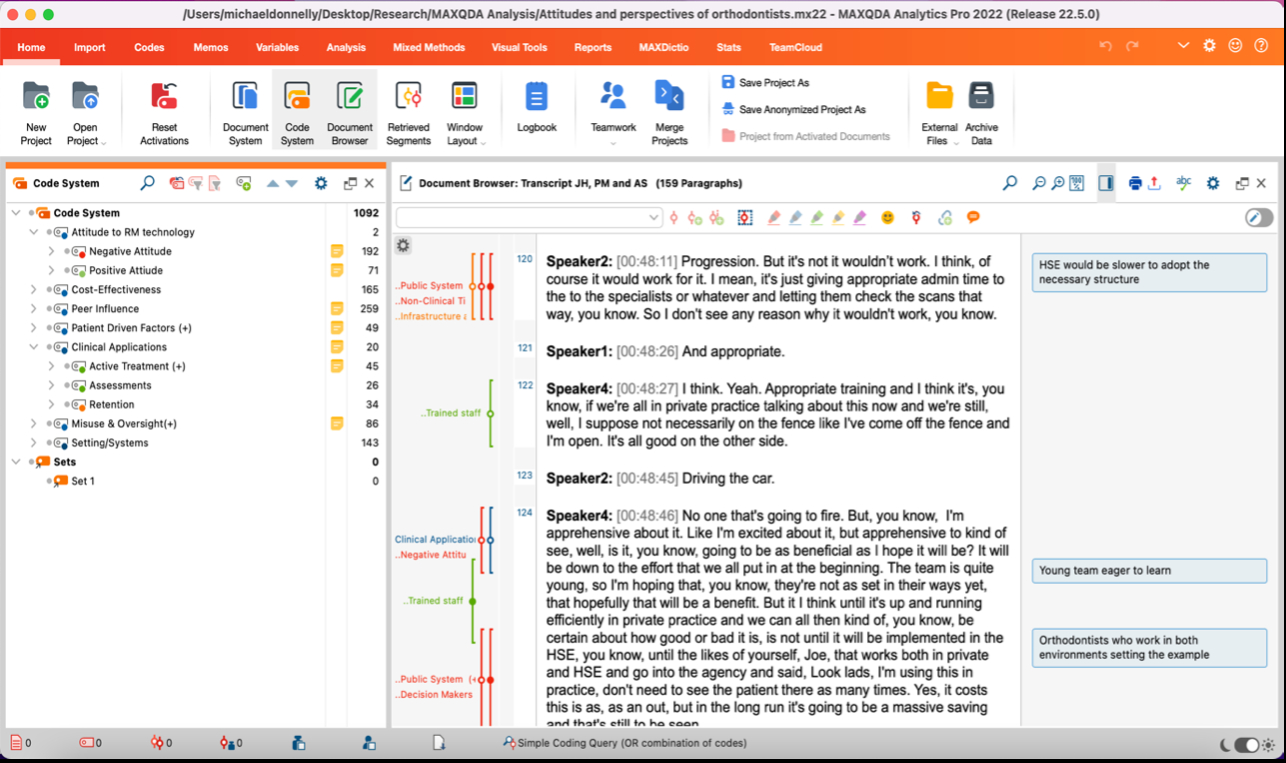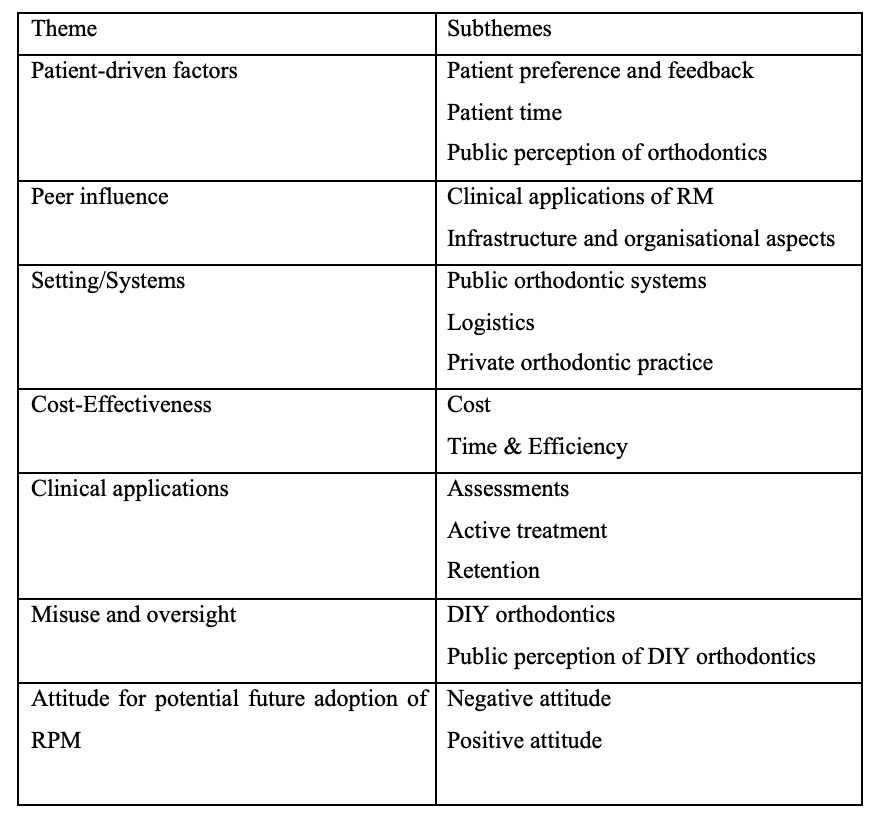IADR Abstract Archives
Attitudes to remote patient monitoring among orthodontists in Ireland - a qualitative study
Objectives: The objectives were to use qualitative methods to gather information from practising orthodontists to identify:
- Facilitators and barriers relating to the acquisation and implementation of remote patient monitoring
- Attitudes to remote patient monitoring
- Perceived influence of remote patient monitoring on orthodontic practice
Methods: A descriptive, qualitative study was conducted involving a purposive sample of orthodontists working in private and public orthodontic practices across Ireland. A topic guide was developed. Six focus groups and a single interview involving 16 participants were undertaken. Interviews were audio-recorded and transcribed verbatim with Sonix TM software. A reflexive thematic analysis approach was carried out for data analysis using MAXQDA TM software.
Results: Following data analysis, seven main themes were identified. Factors influencing adoption of RPM include patient-driven factors, peer influence, settings/systems, cost-effectiveness, clinical applications, misuse and oversight, attitude for potential adoption of RPM technology. These factors were found to exert important roles as influencers, barriers or both. Orthodontists anticipate broad adoption of RPM technologies in the future allied with an increased array of applications and available technologies. An increased acceptance and penetration of RPM was acknowledged; however, not all non-user participants would be willing to embrace this.
Conclusions: This qualitative study highlights the multifaceted nature of RPM as perceived by the participants with a range of facilitators and barriers identified. Semi-structured qualitative interviews of Irish Orthodontists in private and public workplaces revealed the following:
- Users of RPM technology have a positive attitude towards RPM technology whilst non-users have ambivalent attitudes;
- Users positively perceive a positive influence of RPM on their practices through increased efficiency, broad usage, financial and time savings;
- Non-users perceive lack of patient desire, fixed appliances, public orthodontic setting, cost, time, public perception of profession as barriers; and
- Remote monitoring of oral hygiene of patients with fixed appliances may become imbedded into routine care
- Facilitators and barriers relating to the acquisation and implementation of remote patient monitoring
- Attitudes to remote patient monitoring
- Perceived influence of remote patient monitoring on orthodontic practice
Methods: A descriptive, qualitative study was conducted involving a purposive sample of orthodontists working in private and public orthodontic practices across Ireland. A topic guide was developed. Six focus groups and a single interview involving 16 participants were undertaken. Interviews were audio-recorded and transcribed verbatim with Sonix TM software. A reflexive thematic analysis approach was carried out for data analysis using MAXQDA TM software.
Results: Following data analysis, seven main themes were identified. Factors influencing adoption of RPM include patient-driven factors, peer influence, settings/systems, cost-effectiveness, clinical applications, misuse and oversight, attitude for potential adoption of RPM technology. These factors were found to exert important roles as influencers, barriers or both. Orthodontists anticipate broad adoption of RPM technologies in the future allied with an increased array of applications and available technologies. An increased acceptance and penetration of RPM was acknowledged; however, not all non-user participants would be willing to embrace this.
Conclusions: This qualitative study highlights the multifaceted nature of RPM as perceived by the participants with a range of facilitators and barriers identified. Semi-structured qualitative interviews of Irish Orthodontists in private and public workplaces revealed the following:
- Users of RPM technology have a positive attitude towards RPM technology whilst non-users have ambivalent attitudes;
- Users positively perceive a positive influence of RPM on their practices through increased efficiency, broad usage, financial and time savings;
- Non-users perceive lack of patient desire, fixed appliances, public orthodontic setting, cost, time, public perception of profession as barriers; and
- Remote monitoring of oral hygiene of patients with fixed appliances may become imbedded into routine care



